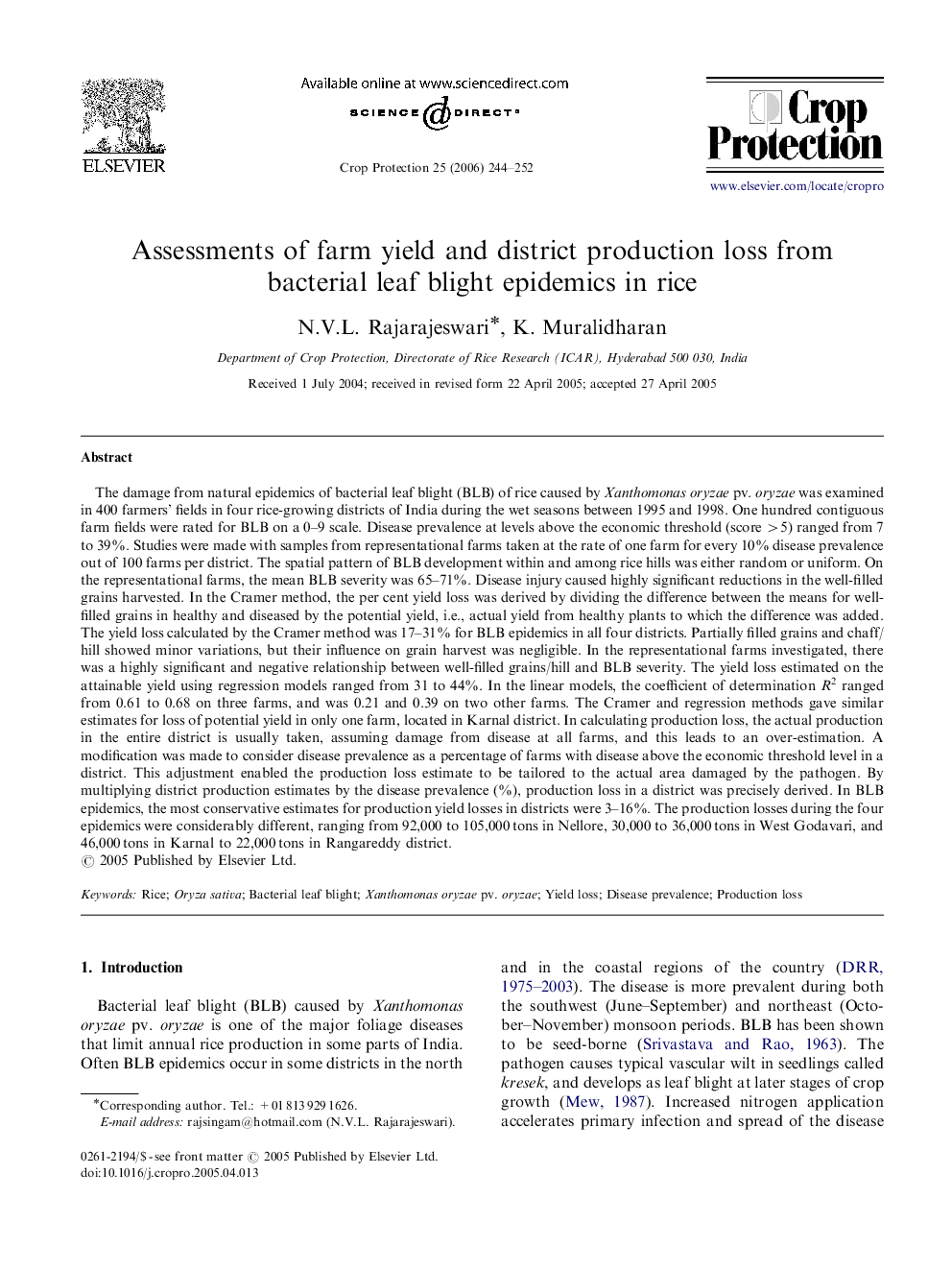| کد مقاله | کد نشریه | سال انتشار | مقاله انگلیسی | نسخه تمام متن |
|---|---|---|---|---|
| 4507430 | 1321355 | 2006 | 9 صفحه PDF | دانلود رایگان |

The damage from natural epidemics of bacterial leaf blight (BLB) of rice caused by Xanthomonas oryzae pv. oryzae was examined in 400 farmers’ fields in four rice-growing districts of India during the wet seasons between 1995 and 1998. One hundred contiguous farm fields were rated for BLB on a 0–9 scale. Disease prevalence at levels above the economic threshold (score >5) ranged from 7 to 39%. Studies were made with samples from representational farms taken at the rate of one farm for every 10% disease prevalence out of 100 farms per district. The spatial pattern of BLB development within and among rice hills was either random or uniform. On the representational farms, the mean BLB severity was 65–71%. Disease injury caused highly significant reductions in the well-filled grains harvested. In the Cramer method, the per cent yield loss was derived by dividing the difference between the means for well-filled grains in healthy and diseased by the potential yield, i.e., actual yield from healthy plants to which the difference was added. The yield loss calculated by the Cramer method was 17–31% for BLB epidemics in all four districts. Partially filled grains and chaff/hill showed minor variations, but their influence on grain harvest was negligible. In the representational farms investigated, there was a highly significant and negative relationship between well-filled grains/hill and BLB severity. The yield loss estimated on the attainable yield using regression models ranged from 31 to 44%. In the linear models, the coefficient of determination R2R2 ranged from 0.61 to 0.68 on three farms, and was 0.21 and 0.39 on two other farms. The Cramer and regression methods gave similar estimates for loss of potential yield in only one farm, located in Karnal district. In calculating production loss, the actual production in the entire district is usually taken, assuming damage from disease at all farms, and this leads to an over-estimation. A modification was made to consider disease prevalence as a percentage of farms with disease above the economic threshold level in a district. This adjustment enabled the production loss estimate to be tailored to the actual area damaged by the pathogen. By multiplying district production estimates by the disease prevalence (%), production loss in a district was precisely derived. In BLB epidemics, the most conservative estimates for production yield losses in districts were 3–16%. The production losses during the four epidemics were considerably different, ranging from 92,000 to 105,000 tons in Nellore, 30,000 to 36,000 tons in West Godavari, and 46,000 tons in Karnal to 22,000 tons in Rangareddy district.
Journal: Crop Protection - Volume 25, Issue 3, March 2006, Pages 244–252